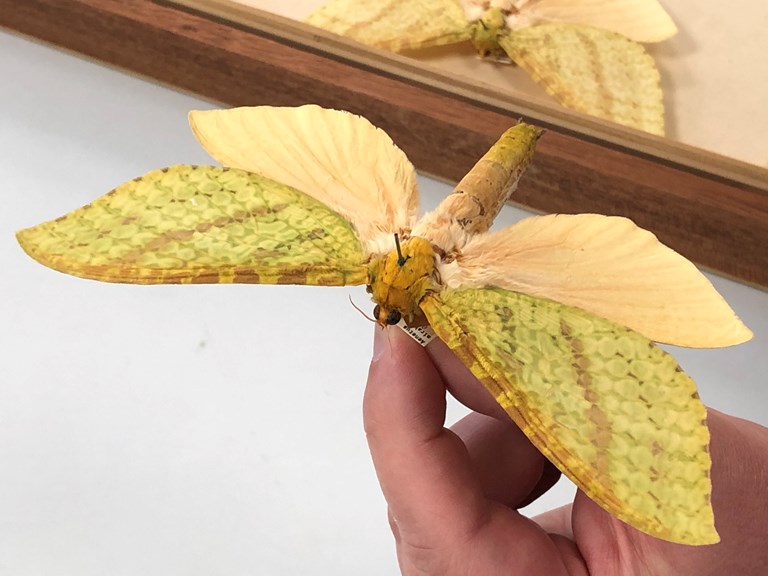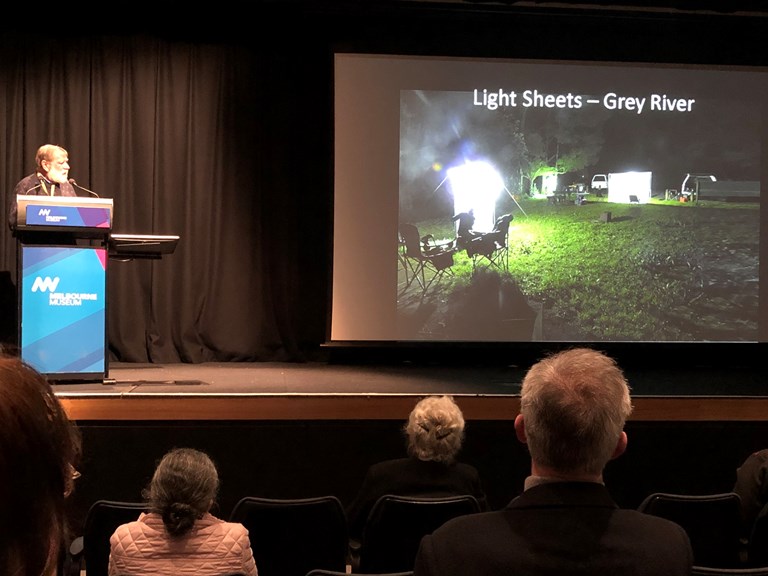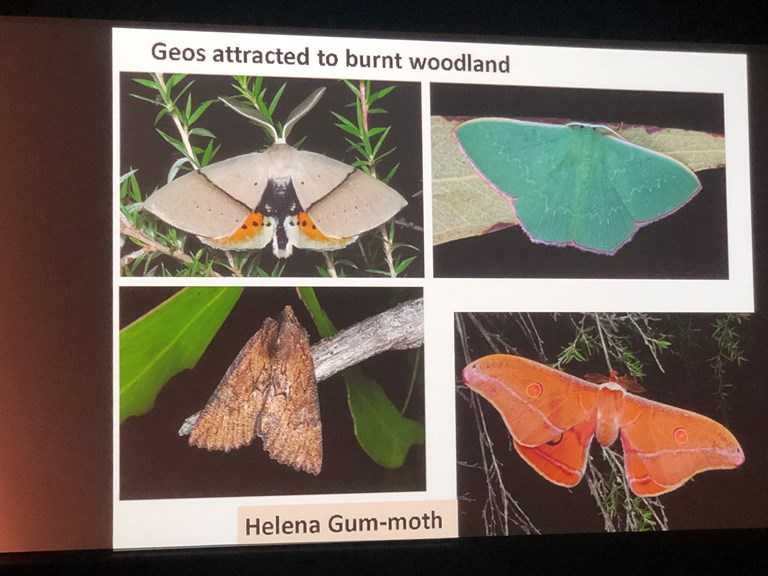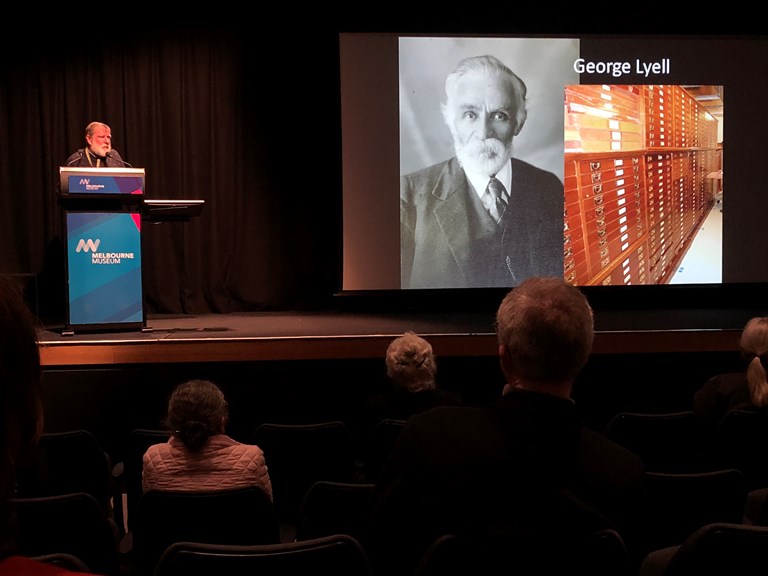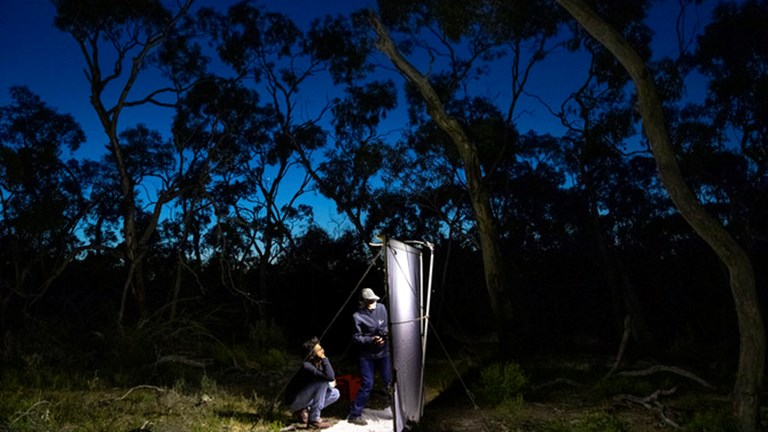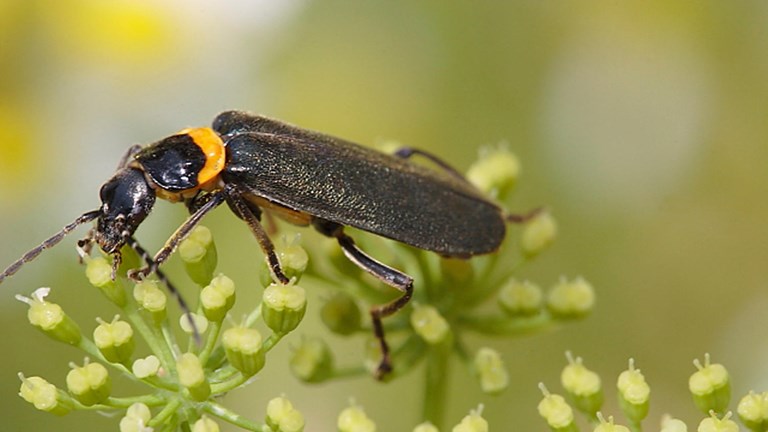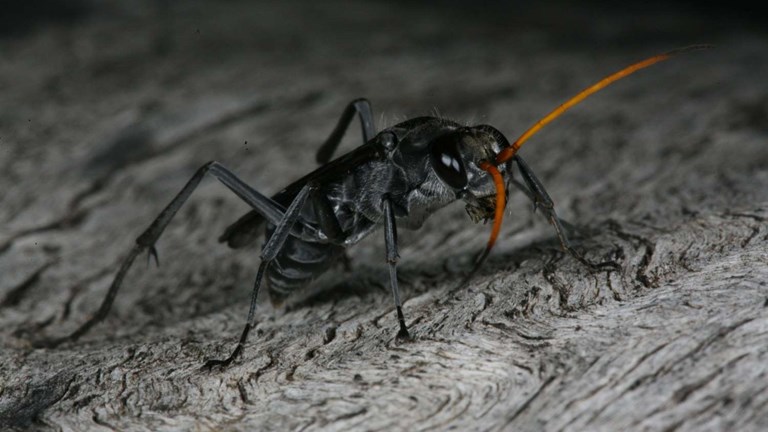Light sheets
Moths become an obsession to those who truly know them. You might hear people, who haven’t got the moth obsession, say ‘I love butterflies, I hate moths!’ Sadly, they’re missing out. Not because butterflies are not beautiful, but because moths are beautiful too.
When it comes to the state of Victoria, there are more species of moths than there are butterflies – did you know that?
Someone who has the moth bug, pardon the pun, is Peter Marriott. On 15th August, Peter gave an enjoyable talk about moth bioscans in the Otways for National Science Week at Melbourne Museum.
Peter has surveyed moths in Victoria for decades, and is an honorary associate working with the moth collection at Melbourne Museum. Along with other collaborators (co-authors and photographers) Peter produces a series of publications called “Moths of Victoria”. This is a great reference work for moth lovers and entomologists in Victoria. The high quality photographs which appear in these publications are also available on a CD. This CD assists collection managers and curators to identify Victorian moths.
Together with a team of scientists Peter works through the night on bioscans. For instance, observations made about the behaviour of moth species before and after fires help us better understand how different moths are attracted to or repelled from burned areas. These observations, made in the field, assist conservation efforts.
Peter’s lecture explored the differences between our modern methods and how George Lyell collected in the early 1900s. Lyell used a lamp, stick and umbrella. He used the stick to hit branches in the dark, and an open umbrella to catch the moths.
Peter explained that modern collecting is usually done with large white sheets, heavy-duty lights, camping chairs and cameras. Using bioscans, Peter and his colleagues prefer to photograph and document moths rather than collect them as physical specimens. Physical specimens are collected if a new species is discovered. The type specimen is described and then stored in a museum collection.
I’ve learnt a lot about moths over the past 8 months working with the George Lyell Collection, but Peter has made me realise how much more I have to learn. Moths are infinitely complex and curious creatures, and I’m enjoying getting to know them.
The George Lyell Collection: Australian Entomology Past and Present McCoy Seed Funding Project is led by Professor Deirdre Coleman, School of Culture and Communication at the University of Melbourne. Nik McGrath, Archivist, Museums Victoria, is the coordinator at Museums Victoria, with colleague Simon Hinkley, Collection Manager, Entomology and Arachnology.
Written by Nik McGrath, archivist, Museums Victoria
If you’re interested in learning more about the project, see our previous articles Butterflies of the night, Like moths to a flame, Pressed orchids, The sting of the final letter and Trading Nature.
